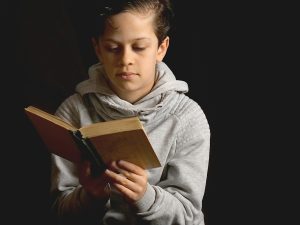Why We should STOP teaching reading in schools - Part 5

Blog Series: Why We should STOP teaching reading in schools
Part 5: Mapping, Word Mapping, “Sight Word” storage, and Irregular Words
This blog series explores the development of Written Language: reading, spelling, and writing as a natural extension from oral language to visual language.
This blog series describes what reading IS – the integration of visual language (letters) into already-existing oral language processing systems (sounds, words, and vocabulary).
The Logo-graphic brain and Visual Memory:
You MUST attach the visual form of a word to the ALREADY EXISTING vocabulary word represented or “stored” in the oral language system. Remember that this is 2-pronged storage of both the word MEANING but also the spoken word STRUCTURE. You CANNOT “Start over” and start trying to build a visual vocabulary with the eyeballs. Our brain will store 300 – 500 words in our visual memory (logo-graphic memory), but that’s it.
Many child reading programs recycle the 500 most common and most frequently used words. Students learn to “visually” recognize these 500 words and look like they are reading until about Grade three, when we bump up the diversity of vocabulary in their reading. At this point, the visual system fails, the student fails, and our academic system fails.
Mapping and integrating Irregular Words into Long-term permanent Storage:
I have seen many, many students that attempt spelling the word “laugh” like this: laguh
ALL the visual elements are here, but out of sequence. However, this is a MAJOR red flag that the language system is not “hooked up” or being accessed. If it was, the student would relate the /l/ sound to the letter “l”; the vowel sound we hear – short a /ah/ vowel sound would be associated with the available vowel letters!!! “au” represents /ah/. Because we only have one sound left, the remaining letters “gh” are assigned to the final /f/ sound. The brain “processes” the word “laugh” as 3 sound units /l-a-f/ and MAPS it against 3 letter units: “l -au-gh”. The visual form gets connected to the oral form.
Not only is the word “laugh” mapped and stored, the brain has additional access to GENERALIZATION. Often without study, related or associated words like “cough” and “tough” are now available to be mapped and stored in long-term permanent storage – often with just one further contextual exposure. The “pattern” that matches the “gh” letters to the /f/ sound can get generalized or extended to other words that a student experiences.
If your student spells “laguh”, not ONLY are they failing to acquire THIS word, but they are missing out on the underlying INTEGRATION PROCESS that allows generalization.
Worse, they may have INCORRECTLY started to map the “gh” letters to the wrong sounds in words like “although” or “bough” and may have incorrectly mapped the “au” letters to short a “ah” sound which now confuses them when approaching a word like “pause”.
This is why the idea of “Catching up” is such a scary, scary assumption to make: while your student missed “laugh” this week, they also failed to anchor, begin, or fully map “tough”, “enough”, “cough”, and “slough”. They VERY quickly fall behind, and without efficient processing, CONTINUE to fall further behind, or at the very least STAY behind.
Note that to CATCH UP, our student would have to learn at a FASTER rate than peers! This is a near-impossible task – to ask a student with a language disorder to learn language at a FASTER rate than a child without a language disorder!
Watch for part 6 and beyond of this blog series as we discuss sight words.
Read Intro: Why We should STOP teaching reading in schools
Read Part 1: What are the components of Oral language?
Read Part 2: What is Visual or Written Language, and how is it INTEGRATED?
Read Part 3: Spoken word Structure, Written Word Structure, and Word Meaning: MAPPING Language Units
Read Part 4: More Integration through Mapping – Mapping Words
Got questions, concerns, yeah buts? Visit www.speak2read.ca to engage in some delightful conversation on how you can improve your reading instruction or your child’s learning.

